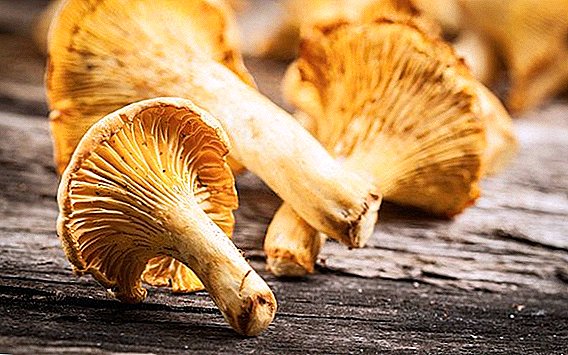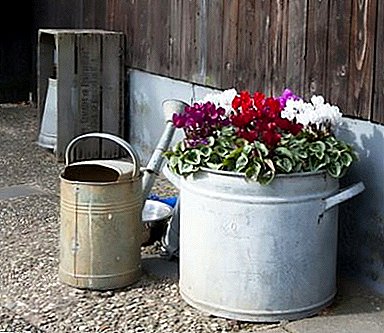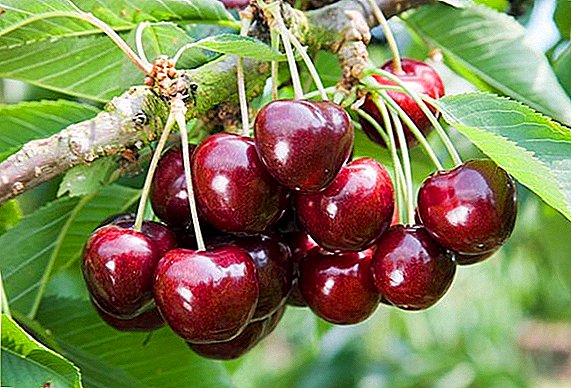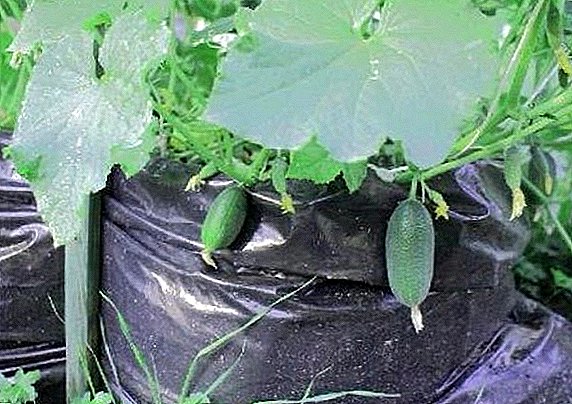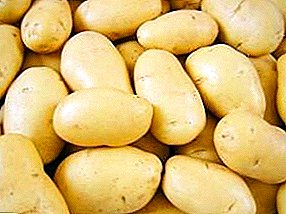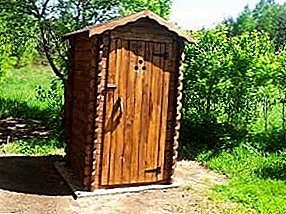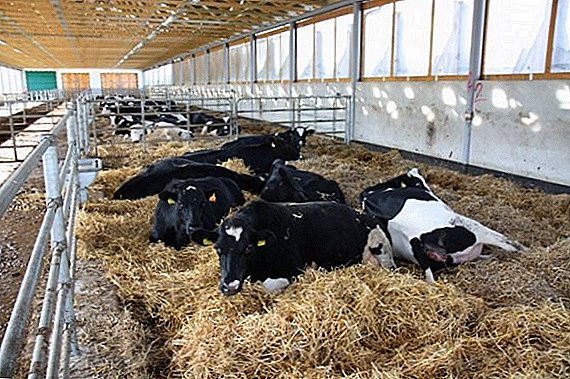 Having decided to start cattle, it is necessary to think over the conditions of its maintenance. After all, the future of the entire economy depends on a well-built barn. Despite the complexity of the construction process, with patience and certain skills, it is quite possible to master it yourself, without the involvement of specialists. Let's consider its main points - the choice of a place for a barn, the erection of all its elements and the necessary equipment.
Having decided to start cattle, it is necessary to think over the conditions of its maintenance. After all, the future of the entire economy depends on a well-built barn. Despite the complexity of the construction process, with patience and certain skills, it is quite possible to master it yourself, without the involvement of specialists. Let's consider its main points - the choice of a place for a barn, the erection of all its elements and the necessary equipment.
Choosing a place for the construction of the barn
Starting the construction of the barn with your own hands, you first need to choose its location. According to sanitary standards, the minimum distance from the barn to residential buildings should be 15 m, and to a drinking well or well - 20 m. Such a remote location will protect the sources of drinking water from pollution, and the dwelling - from unpleasant smell. 
In addition, it is desirable that in the near availability was pasture for walking and feeding of livestock. Even at the construction stage there can be planted fodder crops - clover, alfalfa or vetch.
Design and dimensions
The area of the future barn is determined based on the planned number of herds. In this case, for 1 adult individual, taking into account the feeding trough and passage, 6 square meters are needed. m square, and a cow that was left out - 10 square meters. m. Thus, the useful area of the barn for 10 cows should be 60 square meters. m, 20 cows - 120 square meters. m, 50 cows - 300 square meters. m, per 100 cows - 600 square meters. m, 200 cows - 1200 square meters. m
Breeds of dairy cows are considered to be Yaroslavl, Kholmogory, Jersey, Holstein, brown Latvian, red steppe, Dutch, Ayrshire.
In addition, it is necessary to provide utility rooms. Usually, a barn for storing milk, a delivery room, an insulator, an economic block and other premises are designed for a barn for 20 or more heads.
The passage between the stalls should be at least 1.2-1.5 m, and the height of the barn should be at least 2.5 m. A floor slope should also be provided for slurry flowing out of the manure and urine - 2-3 °. 
Designing a large barn can be entrusted to a specialist who can correctly take into account all the necessary details.
How to build a barn with your own hands
The room for cows should be spacious, lighted, moderately warm, with good ventilation and all necessary communications. Animals should be able to stand, lie down, move to bed and feeding trough. In addition, you should choose the best materials - quality and economical.
Did you know? UN experts considered that cows, emitting 18% of all greenhouse gases, cause more harm to the ecology of our planet than cars or airplanes. Only the gases and manure of these animals are responsible for more than a third of the methane entering the atmosphere, which heats the Earth 20 times faster than carbon dioxide.
Foundation
The durability of the building itself largely depends on a properly laid foundation, so it must have good reliability and durability. The foundation can be of different types:
- monolithic;
- columnar;
- tape
Video: foundation technology for farms
If you plan to build a building of wood or wooden log, then it is better to make a columnar foundation. It is carried out similarly to the monolithic, only the foundation columns with reinforcement, insulated with roofing felt, are poured with concrete. The distance between the pillars should be no more than 2 m. Also, for small barns, a tape variant of the foundation is used, filled with concrete solution of formwork with reinforcement.
Learn more about the features of breeding Simmental, Shorthorn, Kazakh Whitehead, Hereford, Aberdeen-Angus cows.
Regardless of the type of foundation, you should take care of waterproofing, slope for water and sand and crushed stone layer on the outer edge. Since barns are usually designed for 10 years or more, a concrete base is the best choice. It perfectly maintains the weight of an adult animal, does not dampen, does not absorb water and odors and does not let rodents through. It is also possible to make the base of a rubble stone or brickwork.
Floor
One of the most important elements of the barn is its gender. It must be warm and water resistant to prevent the accumulation of liquid waste. For removal of a mixture of water, urine and manure, the floor is made above ground level with a slope of 3 ° towards the discharge channel. Greater bias is not worth doing, because it badly affects the limbs of animals and may even lead to miscarriages of body cows.

The concrete floor completely satisfies the requirements for water resistance and reliability, but it is too cold, which provokes the development of mastitis in animals. Therefore, it must be covered with warmer material, for example, wooden flooring, which is fairly easy to replace periodically.
Walls
The material for the walls of the barn can be very diverse:
- tree;
- wooden frame;
- silicate brick;
- cinder block;
- a rock;
- foam concrete;
- sandwich panels.
Video: barn do it yourself. Frame walls
A small shed for 1-2 cows is often built from adobe brick. It is inexpensive and has good thermal insulation. The basement rows in this shed are laid out of baked bricks.
Check out the features of milking a cow.
The design should take into account the climate in the area of construction. So, the stone barn differs in that it warms up slowly during the day and cools quickly at night, which is why condensate is constantly forming on its walls. Therefore, it is preferable to use a brick, which is a more "breathing" material, and the amount of condensation on the walls will decrease.  Also a good option for the barn is a three-layer sandwich panels with insulation with mineral wool. In such a room the optimum temperature is maintained - warm in winter and moderate in summer. From the outside, such panels are revetted with steel and painted.
Also a good option for the barn is a three-layer sandwich panels with insulation with mineral wool. In such a room the optimum temperature is maintained - warm in winter and moderate in summer. From the outside, such panels are revetted with steel and painted.
Important! During the construction of the barn, it is recommended to adhere to the following steps: the construction of the foundation, the construction of walls and roofs, the installation of windows and ventilation, lighting, installation of doors and gates, the construction of a manure depository.
In spite of the material from which the walls are, inside they are necessarily plastered and whitened. This allows the room to look neat and provides a good reflection of light.
Roof
The most common variant of the roof of the barn is a wooden ceiling and a gable roof with slate or tile coating. Under such a roof is very convenient to arrange an attic, where you can store stocks of hay, fodder or any inventory.
Shed roofs are used only for small barns, as they have the risk of snow retention and subsidence of the structure.
Windows and doors
The main lighting of the barn - natural, through the window openings. According to the norms, their total area should be 10% of the floor area of the building. The bottom of the window is usually placed at a height of 1.5-1.6 m from the floor level. 
There are several window designs:
- double-glazed windows;
- hinged windows with polycarbonate filling;
- sliding windows with colorless polycarbonate.
For care of cows, it will be important for you to know about the ways of keeping cows.
Doors in the barn do hinged with insulation to keep warm indoors in the winter season. The gate must be equipped with a lifting mechanism.
Ventilation
Do not underestimate the importance of ventilation in the barn, because in the summer heat poor ventilation can lead to a significant reduction in milk production in cows. And at temperatures above 25-30 ° C, animals lose their appetite, which is bad for their general health. 
Therefore, the barn must be equipped with forced ventilation, which provides for the removal of polluted air and fresh air. A small shed can be equipped only with vents for natural ventilation, but with the possibility of periodic ventilation of the room. But on the mini-farm there must be an exhaust hood with dampers and distribution ventilation ducts of at least 15 × 15 cm in size. The output is through a pipe located above the ridge of the roof, and the air inlets in the walls are located at a height of 1 m from the floor level.
Communications
In addition to natural, in the barn should provide artificial lighting with lamps. In this case, all electrical appliances in the room must comply with fire safety measures.
Also at the construction stage, they are planning to supply cold water and, if necessary, connect the outbuildings to the sewage system.
Did you know? The lines on the skin of the nasolabial mirror of cows are similar to the patterns on human fingers. Their prints are also strictly individual for each individual. This is used by American pastoralists from Indiana, creating a base of prints of noses of cows to search for stolen animals.
How to equip a barn for cows
The finished barn should be equipped with stalls, feeders, drinkers, bedding and other necessary equipment. 
Stall
When using the tethered method of livestock maintenance, the barn is equipped with stalls. In this case, the room is divided into sections 125 cm wide and 260 cm long. If necessary, the length can be increased to 330 cm. The stall should not be expanded, because although the cow should be comfortable, it should not turn around, otherwise it will be emptied right near the trough.
Check out the best breeds of cows.
With a two-sided arrangement of sections between them, a passage 1.5 m wide should be arranged. When making the stall, consider the weight and strength of the livestock, therefore it is worth taking strong wooden beams or thick metal pipes as the material. 
Feeders and drinkers
Drinking bowls and feeders - an indispensable part of any barn. The trough should be located outside the stall and reach the full width of its outer part so that the animal can eat at any time when it wants. The feeder has a trapezoidal shape with a bottom width of 40 cm and a top width of 60 cm. The front side of the feeder, located on the side of the stall, must be at least 40 cm in height, and the rear side must be at least 75 cm.
Holes are provided at the bottom of the feeder, which simplifies the process of washing. In this case, the bottom of the feeder should be located at a distance of at least 7 cm from the floor.
It will be important for you to know how much the average cow weighs and why it is important to trim the hooves of the cows.
The feeder can be made independently or to get ready. The wooden feeder must be well treated to a smooth surface so that the cattle do not hurt. In addition, there is a large selection of feed tanks made of artificial materials. They are characterized by good durability, safety, they are easy to clean and disinfect. 
The drinker should be placed above the feeder and closer to the far corner from the exit from the stall. The cow should be able to drink at any time, so it is best to make the drinker automatic.
Laying: what is better, what is the thickness
To maintain cleanliness and dryness, a litter on the floor must be provided in the stall. As it can be used straw, sawdust, shavings, sand or straw with dry peat. Special rubber mats are also used. However, they are quite expensive and retain moisture for a long time, which can lead to injuries and the development of dangerous bacteria.
Sand, in turn, is very convenient in the summer, but in the winter it freezes quickly. In addition, its large weight complicates the process of replacing the litter.
Important! If a comfortable bedding is laid in the stalls, the cows will tend to spend most of the time lying down. This has a beneficial effect on the process of chewing food, the condition of their limbs and reduces the percentage of lameness among animals.
The best option is straw or sawdust. It is a lightweight material that absorbs moisture well and is easily replaced. The main thing is that the sawdust is large enough and does not give dust, so as not to cause respiratory diseases.
When creating a deep litter, first lay out the first layer of straw in 10-15 cm. As far as pollution is applied, a fresh litter is placed (1 time per week, 3-4 rolls or 500 kg of straw each). In the spring, all cattle are driven out to pasture, and the room is ventilated. And in the middle of summer all rotted straw with manure is removed by a bulldozer.  Also on sale are special livestock mattresses for cows, made according to modern technologies. The thickness of such a mattress is 2-6 cm, the width of one layer is 120-180 cm. This coating not only maintains the weight of animals, but is also resistant to damage from their sharp hoofs.
Also on sale are special livestock mattresses for cows, made according to modern technologies. The thickness of such a mattress is 2-6 cm, the width of one layer is 120-180 cm. This coating not only maintains the weight of animals, but is also resistant to damage from their sharp hoofs.
What else is needed
Among other things, you should organize a paddock for walking animals and a manure.
Check out the features of the milking machine.
Paddock for walking
A shed for cows must have a free-form paddock outside. Its area should allow free walking of animals, and the total length of the walking track for livestock should be at least 500 m. 
The corral must be fenced using wood or timber. You should also provide a shelter, under which animals could hide from rain or intense heat.
Manure
For a farm with a large number of livestock, one cannot do without a slurry collector consisting of a mixture of manure and animal urine.
Familiarize yourself with the meat breeds of cows: Kalmyk, Kazakh, Highland, Aberdeen-Angus.
To do this, in the back of each stall arrange a chute for manure not less than 20 cm wide and not less than 10 cm deep, with a slope to the side of the collector. Usually, the manure is arranged directly near the barn. Its minimum dimensions are: depth - 80 cm, width - 120 cm. When planning a manure store, it is necessary to take into account the number of cows and the fact that a cow produces about 12 tons of manure per year. 
If the cows are kept on a deep litter, then there is no provision for a dung store.
Now you know how to build a barn yourself and what rules you need to follow. Cows are very demanding to the conditions of detention. From the comfort of the room depends on the health of the herd, the amount of milk and, ultimately, the benefit of the owner of the farm.



